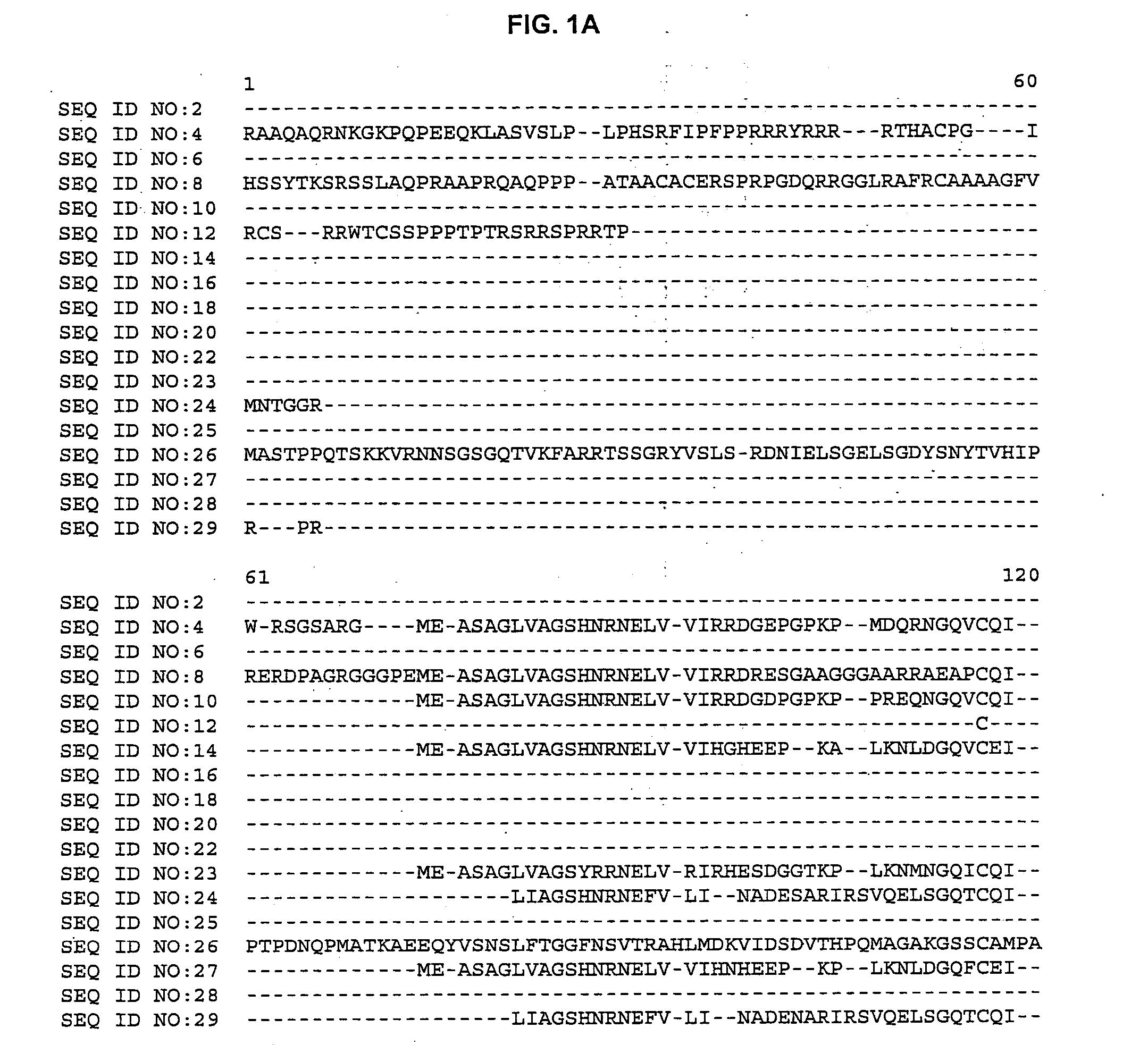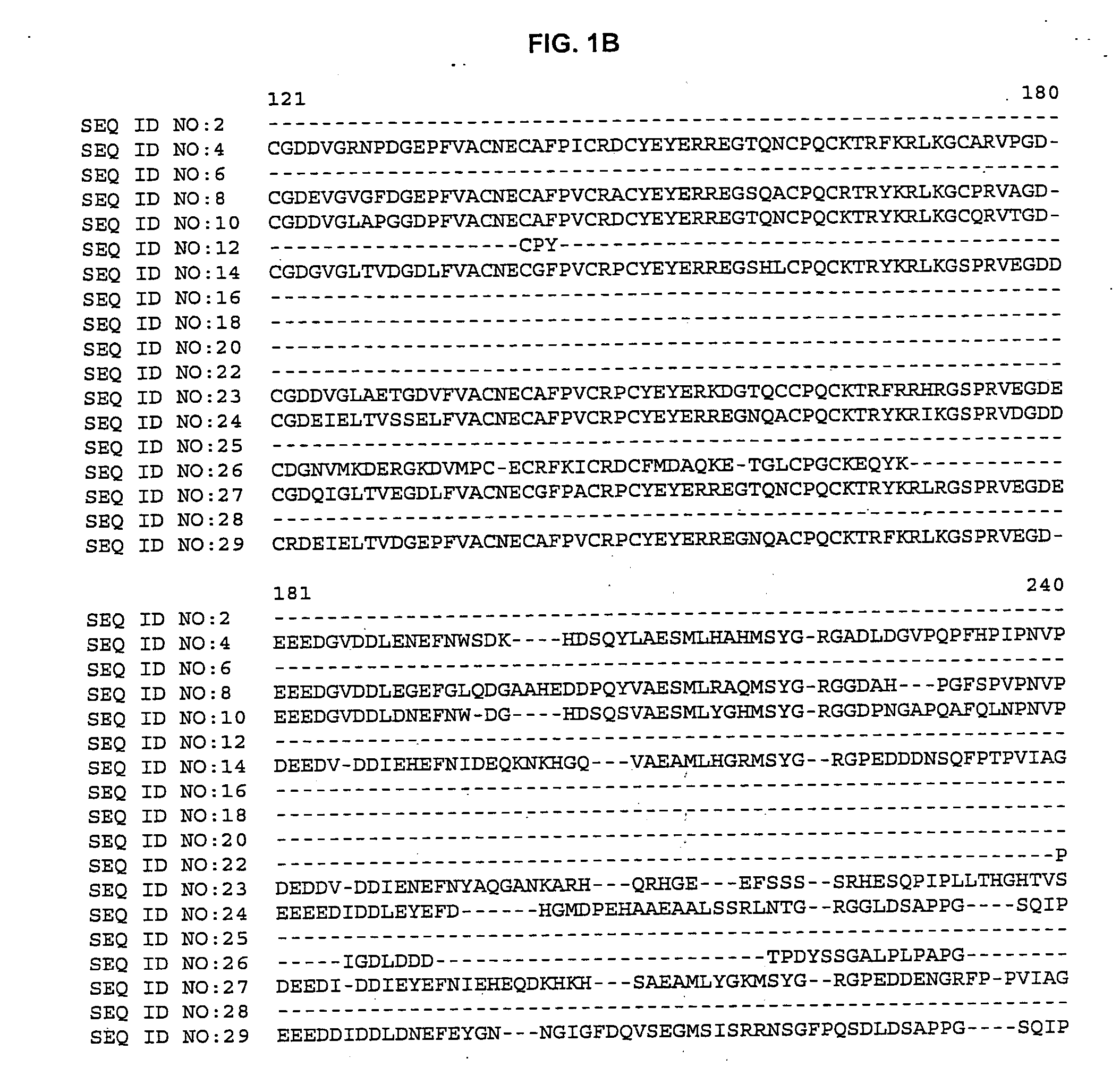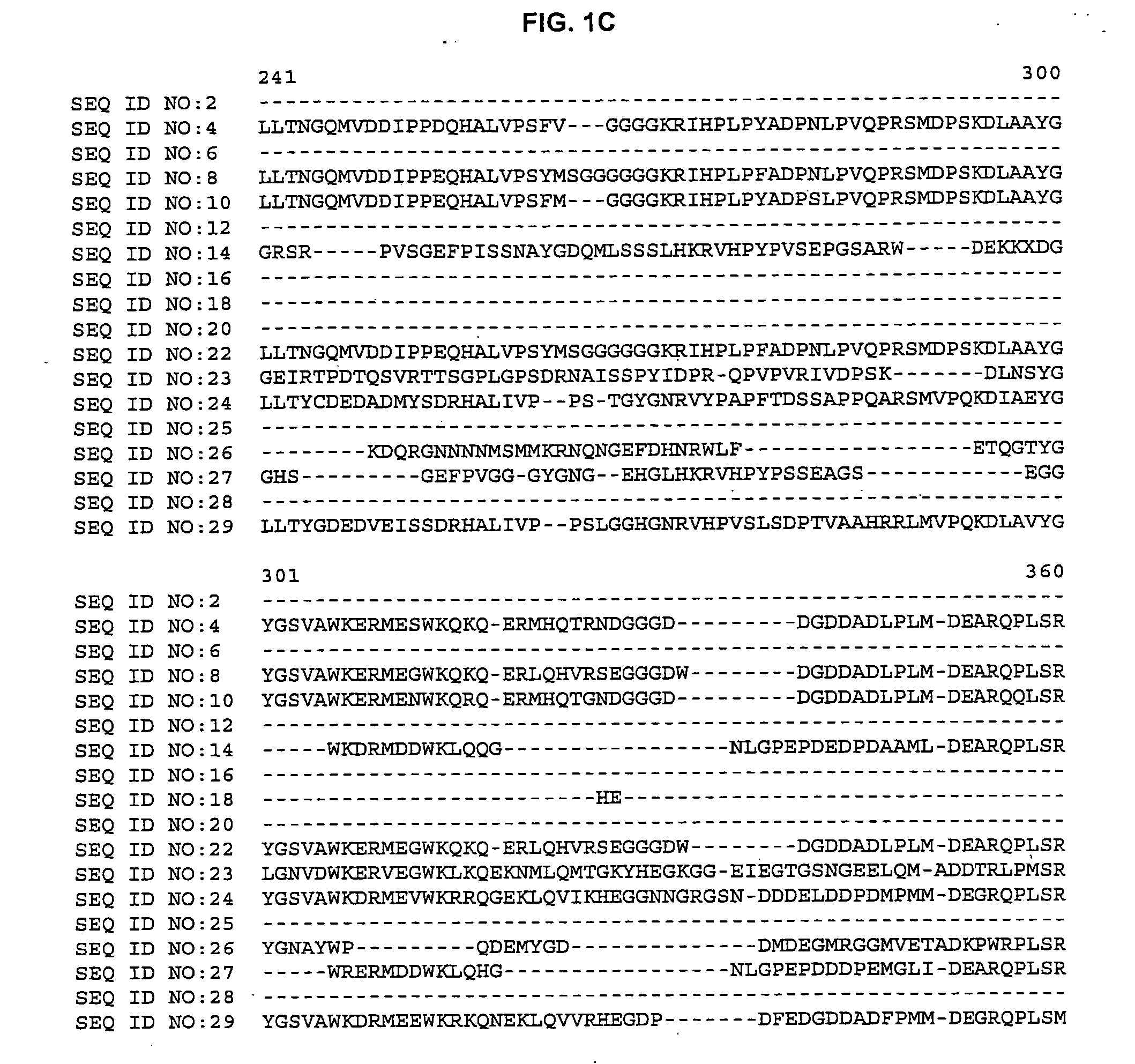Plant cellulose synthases
a technology of plant cellulose and cellulose, which is applied in the field of plant molecular biology, can solve the problems of likely lethal inhibition of cellulose synthesis, and achieve the effect of inhibiting activity and potential inhibitory activity
- Summary
- Abstract
- Description
- Claims
- Application Information
AI Technical Summary
Problems solved by technology
Method used
Image
Examples
example 1
Composition of cDNA Libraries; Isolation and Sequencing of cDNA Clones
[0057] cDNA libraries representing mRNAs from various barley, corn, rice, soybean and wheat tissues were prepared. The characteristics of the libraries are described below.
TABLE 2cDNA Libraries from Barley, Corn, Rice, Soybean and WheatLibraryTissueClonebsh1Barley (Hordeum vulgare) sheath, developing seedlingbsh1.pk0002.f6cco1nCorn (Zea mays) cob of 67 day old plants grown in greencco1n.pk0005.g3house*cdt2cCorn (Zea mays) developing tassel 2cdt2c.pk002.g1cdt2c.pk002.l16cr1nCorn (Zea mays) root from 7 day seedlings grown in light*cr1n.pk0135.e10csc1cCorn (Zea mays) 20 day seedling (germination under coldcsc1c.pk002.i1stress)p0031Corn (Zea mays) shoot culture, initiated from seed derivedp0031.ccmar05rbmeristems culture was maintained on 273N medium.p0110Corn (Zea mays) stages V3 / V4** leaf tissue minus midribp0110.cgsma57rharvested 4 hours, 24 hours and 7 days after infiltrationwith salicylic acid, tissues pooled*...
example 2
Identification of cDNA Clones
[0059] cDNA clones encoding cellulose synthase enzymes were identified by conducting BLAST (Basic Local Alignment Search Tool; Altschul et al. (1993) J. Mol. Biol. 215:403-410) searches for similarity to sequences contained in the BLAST “nr” database (comprising all non-redundant GenBank CDS translations, sequences derived from the 3-dimensional structure Brookhaven Protein Data Bank, the last major release of the SWISS-PROT protein sequence database, EMBL, and DDBJ databases). The cDNA sequences obtained in Example 1 were analyzed for similarity to all publicly available DNA sequences contained in the “nr” database using the BLASTN algorithm provided by the National Center for Biotechnology Information (NCBI). The DNA sequences were translated in all reading frames and compared for similarity to all publicly available protein sequences contained in the “nr” database using the BLASTX algorithm (Gish and States (1993) Nature Genetics 3:266-272) provided ...
example 3
Characterization of cDNA Clones Encoding Cellulose Synthase
[0060] The BLASTX search using the EST sequences from clones listed in Table 3 revealed similarity of the polypeptides encoded by the cDNAs to cellulose synthase from Arabidopsis thaliana (NCBI Identifier No. gi 2827139, gi 2827141, gi 4467125, gi 4886756 and gi 3135611) and Gossypium hirsutum (NCBI Identifier No. gi 1706958 and 5081779). Shown in Table 3 are the BLAST results for individual ESTs (“EST”), the sequences of the entire cDNA inserts comprising the indicated cDNA clones (“FIS”), complete gene sequences (“CGS”) or contigs assembled from two or more ESTs (“Contig”):
TABLE 3BLAST Results for Sequences Encoding Polypeptides Homologousto Arabidopsis thaliana and Gossypium hirsutum Cellulose SynthaseCloneStatusBLAST pLog Scorebsh1.pk0002.f6FIS 154.00 (gi 2827139)Contig composed of:Contig>254.00 (gi 2827141)cco1n.pk0005.g3cdt2c.pk002.g1cdt2c.pk002.l16csc1c.pk002.i1p0031.ccmar05rbp0110.cgsma57rcr1n.pk0135.e10FIS 176....
PUM
| Property | Measurement | Unit |
|---|---|---|
| diameter | aaaaa | aaaaa |
| volume | aaaaa | aaaaa |
| pressure | aaaaa | aaaaa |
Abstract
Description
Claims
Application Information
 Login to View More
Login to View More - R&D
- Intellectual Property
- Life Sciences
- Materials
- Tech Scout
- Unparalleled Data Quality
- Higher Quality Content
- 60% Fewer Hallucinations
Browse by: Latest US Patents, China's latest patents, Technical Efficacy Thesaurus, Application Domain, Technology Topic, Popular Technical Reports.
© 2025 PatSnap. All rights reserved.Legal|Privacy policy|Modern Slavery Act Transparency Statement|Sitemap|About US| Contact US: help@patsnap.com



